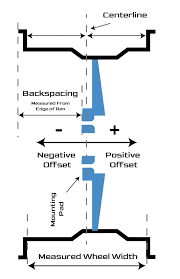In the fast-evolving world of technology, influential figures in AI robotics stand as the architects of a future where machines and humans collaborate seamlessly. Their pioneering ideas have not only redefined automation but also expanded the boundaries of artificial intelligence, allowing robots to think, learn, and respond with human-like precision. As the world transitions into an era dominated by smart systems, these innovators have become the driving force behind every major leap in robotics and artificial intelligence. Their contributions bridge science, ethics, and innovation, laying the foundation for a society where AI becomes an integral part of everyday life.
Shaping the Future with Intelligence and Imagination
Artificial intelligence and robotics are not just products of algorithms and hardware—they are the result of human imagination and persistent experimentation. The influential figures in AI robotics have turned abstract concepts into practical realities, creating systems that can analyze, predict, and assist with incredible accuracy. Their work has gone beyond laboratory experiments, influencing industries such as healthcare, transportation, manufacturing, and even education. From creating lifelike humanoid robots to developing neural networks capable of deep learning, these pioneers have shown that the true power of technology lies in its ability to enhance human potential rather than replace it.
The Innovators Who Merged Human Emotion with Machine Logic
One of the most fascinating aspects of AI robotics is its growing ability to understand and respond to human emotions. Innovators like Dr. Cynthia Breazeal, a pioneer in social robotics, have paved the way for machines that can engage with people on an emotional level. Her creation, the robot Kismet, demonstrated how robots could interpret facial expressions and tone of voice to simulate empathy. Similarly, Hanson Robotics’ founder, Dr. David Hanson, introduced the world to Sophia—a humanoid robot capable of realistic conversation and expression. These influential figures in AI robotics didn’t just build machines; they crafted entities that can form connections, bridging the emotional gap between human and artificial intelligence.
The Thinkers Who Revolutionized Machine Learning
Behind the progress of robotics lies the brainpower of computer scientists who mastered the art of machine learning. One of the most renowned minds in this domain, Geoffrey Hinton, often called the “Godfather of Deep Learning,” revolutionized how machines process and interpret data. His groundbreaking work in neural networks laid the foundation for today’s AI systems that can recognize patterns, make decisions, and even generate creative content. Similarly, Demis Hassabis, co-founder of DeepMind, combined neuroscience with machine learning to develop algorithms capable of mastering complex tasks, from playing chess and Go to predicting protein structures. These influential figures in AI robotics proved that intelligence—whether biological or artificial—can evolve through learning and adaptation.
Women Leading the Way in AI and Robotics
The landscape of AI robotics is not limited to male innovators. Exceptional women have played equally crucial roles in advancing the field. Dr. Fei-Fei Li, co-director of Stanford’s Human-Centered AI Institute, transformed computer vision through her ImageNet project, which trained algorithms to recognize millions of objects. Her work emphasized ethical and human-centered AI, ensuring that technological progress aligns with moral responsibility. Similarly, Dr. Ayanna Howard’s research in human-robot interaction has inspired the design of assistive robots for people with disabilities, showcasing how inclusivity can be achieved through innovation. These influential figures in AI robotics remind the world that diversity of thought leads to richer and more responsible technological growth.
The Philosophers of Artificial Intelligence
Beyond engineering and programming, some pioneers focus on the philosophy and ethics of AI robotics. Figures like Nick Bostrom and Elon Musk have sparked global discussions about the potential risks of uncontrolled AI development. Bostrom’s research into superintelligence warns of a future where AI could surpass human control, while Musk’s advocacy for ethical AI has led to the creation of organizations focused on safety and regulation. These thinkers have broadened the conversation from innovation to introspection, urging the world to consider the consequences of creating intelligent machines. Their voices ensure that the progress made by influential figures in AI robotics remains guided by human values and global safety.
Building a World of Collaboration, Not Competition
What sets the current generation of AI roboticists apart is their vision of collaboration between humans and machines. Instead of viewing robots as replacements for human labor, they see them as partners that enhance productivity and creativity. Engineers like Rodney Brooks, the co-founder of iRobot and Rethink Robotics, have developed robots designed to work safely alongside humans in industrial settings. His collaborative robots (or “cobots”) have redefined workplace automation, proving that robotics can empower workers instead of rendering them obsolete. This philosophy of coexistence is at the core of modern AI development, ensuring that technological progress benefits humanity as a whole.
Education, Accessibility, and the Democratization of AI
Another vital aspect driven by influential figures in AI robotics is the push for democratization of technology. Innovators like Andrew Ng have made AI education accessible through online platforms, enabling millions of students and professionals to learn about machine learning and robotics. By simplifying complex concepts and providing open-source tools, these leaders are ensuring that the benefits of AI extend beyond elite institutions. Their efforts are creating a new generation of thinkers who will continue to advance robotics with ethics, inclusivity, and global collaboration at the forefront.
The Global Impact and the Road Ahead
The contributions of these innovators are not confined to specific industries or regions—they are shaping the global economy, redefining labor markets, and transforming how people live and communicate. From robotic surgeons performing precise operations to AI-driven agricultural systems improving food production, the influence of these figures extends into every corner of modern society. As nations invest heavily in research and development, collaboration among these influential figures in AI robotics will determine the pace and direction of future breakthroughs. The path forward is one of shared responsibility, creativity, and an unwavering commitment to ethical innovation.
Conclusion: The Legacy of Innovation and Humanity
The story of AI robotics is, at its heart, a story of human ingenuity. The influential figures in AI robotics have not only created intelligent machines but also redefined what intelligence itself means. Their vision has transformed industries, improved lives, and sparked conversations about the essence of humanity in an automated world. As technology continues to evolve, their work serves as a reminder that every great innovation begins with a simple human desire—to understand, to create, and to connect. The future they are building is not one ruled by machines, but one where machines amplify the best qualities of human potential.

